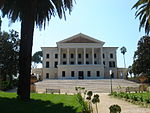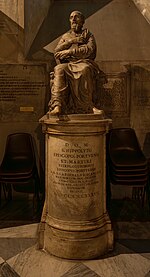Nostra Signora del Santissimo Sacramento e Santi Martiri Canadesi
1955 establishments in Italy20th-century Roman Catholic church buildings in ItalyCatholic Church in CanadaNational churches in RomeRoman Catholic churches completed in 1955 ... and 2 more
Rome Q. V NomentanoTitular churches

Nostra Signora del Santissimo Sacramento e dei Santi Martiri Canadesi (French: Notre-Dame-du-Très-Saint-Sacrement-et-Saints-Martyrs-Canadiens, "Our Lady of the Blessed Sacrament and the Canadian Martyrs") is the Roman Catholic national church of Canada, located at 46, Via Giovanni Battista de Rossi, Rome.
Excerpt from the Wikipedia article Nostra Signora del Santissimo Sacramento e Santi Martiri Canadesi (License: CC BY-SA 3.0, Authors, Images).Nostra Signora del Santissimo Sacramento e Santi Martiri Canadesi
Via Giovanni Battista De Rossi, Rome Nomentano
Geographical coordinates (GPS) Address External links Nearby Places Show on map
Geographical coordinates (GPS)
| Latitude | Longitude |
|---|---|
| N 41.917613 ° | E 12.518967 ° |
Address
Chiesa di Nostra Signora del Santissimo Sacramento e dei Santi Martiri Canadesi
Via Giovanni Battista De Rossi
00162 Rome, Nomentano
Lazio, Italy
Open on Google Maps









